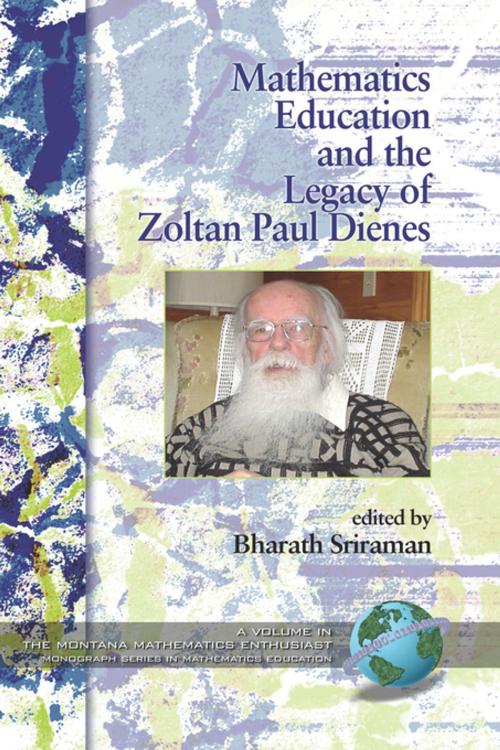Mathematics Education and the Legacy of Zoltan Paul Dienes
Nonfiction, Science & Nature, Mathematics, Research, Study & Teaching, Reference & Language, Education & Teaching| Author: | ISBN: | 9781607529101 | |
| Publisher: | Information Age Publishing | Publication: | March 1, 2008 |
| Imprint: | Information Age Publishing | Language: | English |
| Author: | |
| ISBN: | 9781607529101 |
| Publisher: | Information Age Publishing |
| Publication: | March 1, 2008 |
| Imprint: | Information Age Publishing |
| Language: | English |
The name of Zoltan P. Dienes (1916) stands with those of Jean Piaget and Jerome Bruner as a legendary figure whose theories of learning have left a lasting impression on the field of mathematics education. Dienes' name is synonymous with the Multibase blocks (also known as Dienes blocks) which he invented for the teaching of place value. He also is the inventor of Algebraic materials and logic blocks, which sowed the seeds of contemporary uses of manipulative materials in mathematics instruction. Dienes' place is unique in the field of mathematics education because of his theories on how mathematical structures can be taught from the early grades onwards using multiple embodiments through manipulatives, games, stories and dance. Dienes' notion of embodied knowledge presaged other cognitive scientists who eventually came to recognize the importance of embodied knowledge and situated cognition where knowledge and abilities are organized around experience as much as they are organized around abstractions. Dienes was an early pioneer in what was later to be called sociocultural perspectives and democratization of learning. This monograph compiled and edited by Bharath Sriraman honors the seminal contributions of Dienes to mathematics education and includes several recent unpublished articles written by Dienes himself. These articles exemplify his principles of guided discovery learning and reveal the nontrivial mathematical structures that can be made accessible to any student. The monograph also includes a rare interview with Dienes in which he reflects on his life, his work, the role of context, language and technology in mathematics teaching and learning today. The book finds an important place in any mathematics education library and is vital reading for mathematics education researchers, cognitive scientists, prospective teachers, graduate students and teachers of mathematics.
The name of Zoltan P. Dienes (1916) stands with those of Jean Piaget and Jerome Bruner as a legendary figure whose theories of learning have left a lasting impression on the field of mathematics education. Dienes' name is synonymous with the Multibase blocks (also known as Dienes blocks) which he invented for the teaching of place value. He also is the inventor of Algebraic materials and logic blocks, which sowed the seeds of contemporary uses of manipulative materials in mathematics instruction. Dienes' place is unique in the field of mathematics education because of his theories on how mathematical structures can be taught from the early grades onwards using multiple embodiments through manipulatives, games, stories and dance. Dienes' notion of embodied knowledge presaged other cognitive scientists who eventually came to recognize the importance of embodied knowledge and situated cognition where knowledge and abilities are organized around experience as much as they are organized around abstractions. Dienes was an early pioneer in what was later to be called sociocultural perspectives and democratization of learning. This monograph compiled and edited by Bharath Sriraman honors the seminal contributions of Dienes to mathematics education and includes several recent unpublished articles written by Dienes himself. These articles exemplify his principles of guided discovery learning and reveal the nontrivial mathematical structures that can be made accessible to any student. The monograph also includes a rare interview with Dienes in which he reflects on his life, his work, the role of context, language and technology in mathematics teaching and learning today. The book finds an important place in any mathematics education library and is vital reading for mathematics education researchers, cognitive scientists, prospective teachers, graduate students and teachers of mathematics.















